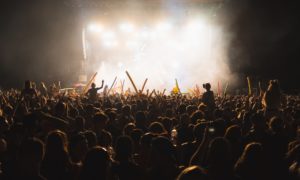 Presented by Adelaide Festival Centre
Presented by Adelaide Festival Centre
Reviewed Sunday 4th September 2011
http://www.ozasiafestival.com.au/Raga-Shambhala.aspx?showid=70
Venue: The Space, Adelaide Festival Centre, King William Road, Adelaide
Season: Concluded
Duration: 1hrs 30min incl interval
The title is a combination of the Indian word, raga, which means 'music that colours the mind', and the Tibetan word, Shambhala, which means 'the pure land', in Tibetan Buddhist tradition this is a mythical hidden land, what we might call Shangri La. These refer to the influences seen in each half of the concert.
This first half featured that popular Tibetan born folk singer and dranyen player, Tenzin Choegyal, with Jay Dabgar on tabla and Josh Bennett on guitars and dilruba. The dranyen is a small four stringed banjo/mandolin like instrument and the dilruba is a bowed sitar. This combination of modern Tibetan folk and a fusion of western music and Indian classical music works extremely well.
Choegyal won many friends the first time he came to Adelaide and his visits are always guaranteed to win more. He has an amiable personality and the warmest of smiles that draws people to him. Added to that are his wonderfully meaningful songs, based in tradition but influenced by his contact with world music. As he sings and provides that rhythmical accompaniment with the dranyen his face seems to light up as he absorbs himself in his music.
There is considerable spirituality in his performances and he is good company with Dabgar and Bennett because Indian music is also deeply spiritual. The good humour between the three was clearly seen and heard as they explored the possibilities that blending these music styles, along with jazz influences in Bennett's playing. Dabgar also had a chance to show his great talent in a tabla solo which drew huge applause.
The first half closed to waves of applause, confirming the popularity and recognising the immense talent of these three fine performers.
In the second half of the concert Bennett switched to sitar to sit at the feet of his guru (teacher), the wonderfully inventive Manju Mehta, joining in whenever she instructed him. As he put it, this was “on the job training”. Dabgar, of course, completed the trio. There are links galore with this group as Maju Mehta is not only Bennett's teacher but her late husband, Nandan Mehta, taught Dabgar, who would often accompany Manju Mehta at the school. She, in turn, was a student of the great Ravi Shankar, as was Bennett, before becoming Mehta's student. This, presumably, accounts for the obviously close connection that exists between them when they play.
A raga can best be thought of by westerners as a theme and variations, with improvisation, which is about the nearest thing that we have to it. The sitar first sets the mood or rasa of the raga with a slow section, the apal, which then develops a clear rhythm, the jor, which builds the tempo to a crescendo called jhala. At this point the tabla joins in as accompaniment as the sitar plays a series of compositions called gat set to rhythmic cycles of a certain number of beats, called a tala. Indian music does not have bars of a set number of beats like western music. Then they each take turn improvising while the other keeps the tala count going until they reach a conclusion. On this occasion the second sitar is added, first in short bursts then, at the end, playing all the time.
This was an absorbing performance by a great master of the sitar, an extremely advanced student and a tabla master that transported the listener with its spiritual basis. Following the glorious first half it complemented it perfectly and the audience were most appreciative of this marvellous double concert.
Reviewed by Barry Lenny, Arts Editor, Glam Adelaide.




















